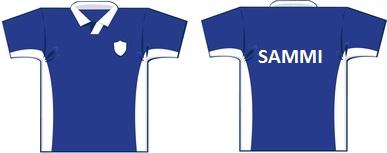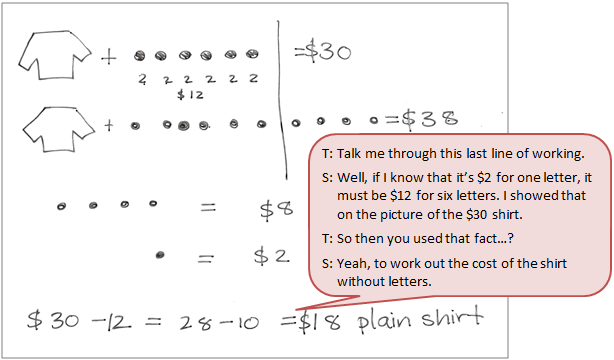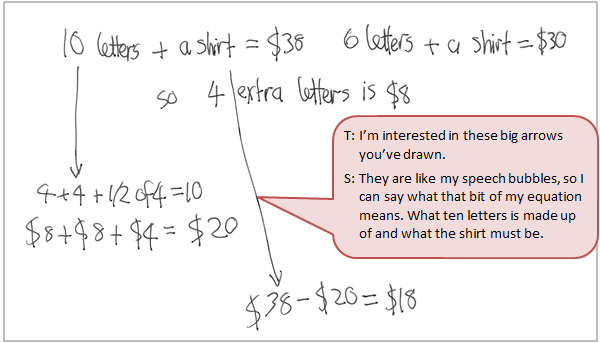The purpose of this activity is to engage students in using mathematical strategies to find an unknown.
This activity assumes the students have experience in the following areas:
- Adding whole numbers using mental, paper, and digital methods.
- Finding the difference between whole numbers by adding on or subtracting.
- Finding unknown members of a growing pattern of shapes or numbers.
The problem is sufficiently open ended to allow the students freedom of choice in their approach. It may be scaffolded with guidance that leads to a solution, and/or the students might be given the opportunity to solve the problem independently.
The example responses at the end of the resource give an indication of the kind of response to expect from students who approach the problem in particular ways.

A sports team shirt with your name printed on the back costs $30 if your name has six letters.
If your name has ten letters, the same shirt will cost you $38.
The cost is worked out on the price of a plain shirt plus a standard amount added on for each letter.
What is the price of a plain shirt (with no name printed)?
The following prompts illustrate how this activity can be structured around the phases of the Mathematics Investigation Cycle.
Make sense
Introduce the problem. Allow students time to read it and discuss in pairs or small groups.
- Do I understand the situation and the words? (Students need to understand the idea that the cost of the shirt is fixed while the cost of letters varies. Standard means each shirt costs the same.)
- What information is important to solving the problem and which information is not important?
- What will my solution look like? (The solution will state the price of a plain shirt with explanation of how that price was worked out.)
Plan approach
Discuss ideas about how to solve the problem. Emphasise that, in the planning phase, you want students to say how they would solve the problem, not to actually solve it.
- How might I represent the problem so I can solve it? (Diagrams, tables, and arithmetic representations are all useful.)
- What are the maths skills I need to work this out? (Students should recognise that the addition of each letter increases the cost in a set amount.)
- What strategies can I use to get started?
- Do you expect there to be a pattern? What kind of a pattern will that be?
- Can I learn about ways to solve the problem from others?
Take action
Allow students time to work through their strategy and find a solution to the problem.
- Am I showing my workings in a way that helps me see a pattern?
- What pattern can I see? Can I describe the pattern?
- How does the pattern help me solve the problem?
- Do my answers seem correct? How can I check?
- How could I make sure that I haven’t missed anything?
- Does my solution answer the question?
Convince yourself and others
Allow students time to check their answers and then either have them pair share with other groups or ask for volunteers to share their solution with the class.
- What is the solution?
- Is my working clear for someone else to follow?
- How does my strategy compare to strategies others have used?
- How would I convince someone else I am correct?
- Could I have solved the problem in a more efficient way?
- What maths knowledge and skills have been useful?
Examples of work
Work sample 1
The student uses a diagram to represent both conditions, shirt + 6 letters cost $30 and shirt + 10 letters cost $38. They use elimination to identify the cost of each letter then subtract to find the cost of the plain shirt.
Click on the image to enlarge it. Click again to close.
Work sample 2
The student represents the rate of letters to dollars using equations involving addition, multiplication and fractions. They work out that 10 letters cost $20 and subtract that from $38 to find the price of the shirt alone.

